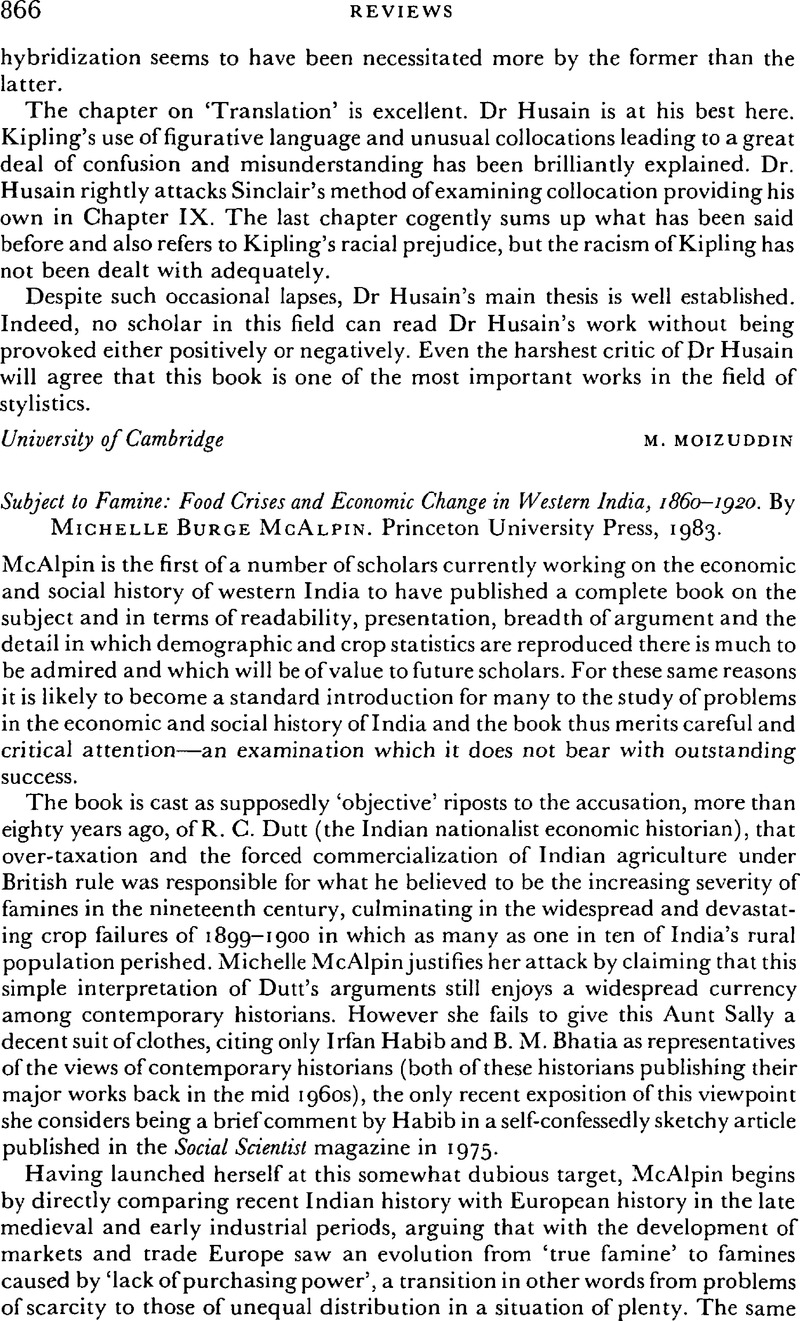Published online by Cambridge University Press: 28 November 2008

1 Sen, A. K., Poverty and Famine: An Essay on Entitlement and Deprivation (Oxford, 1981).Google Scholar
2 Perlin, Frank, ‘Of White Whale and Countrymen in the Eighteenth Century Maratha Deccan. Extended Class Relations, Rights, and the Problem of Rural Autonomy Under the Old Regime‘, Journal of Peasant Studies, 5, 2 (London, 01 1978).CrossRefGoogle Scholar
3 Bates, Crispin N., ‘Regional Dependence and Rural Development in Central India, 1820–1930‘, unpublished Cambridge Ph.D. thesis, 1984.Google Scholar
4 Guha, Sumit, ‘The Agrarian Economy of the Bombay Deccan, 1818–1941‘, unpublished Cambridge Ph.D. thesis, 1981.Google Scholar Guha concentrates on the techno-economic limitations on risk-taking decision making. For an attempt at a wider appraisal of the limits imposed by the social relations of production see Banaji, J., ‘Capitalist Domination and the Small Peasantry: Deccan Districts in the Late Nineteenth Century’, Economic and Political Weekly, Special Number (Bombay, 08 1977).Google Scholar
5 A good starting point would be the Indian Central Cotton Committee's General Report on Eight Investigations into the Finance and Marketing of Cultivators' Cotton (Bombay, 1928).Google Scholar
6 A well-balanced summary of this debate is available in Charlesworth, Neil, British Rule and the Indian Economy, 1800–1914 (London, 1982), pp. 32–5.CrossRefGoogle Scholar
7 See, for example, Census of India, 1921, vol. XI, pt 1, pp. 18–19.Google Scholar